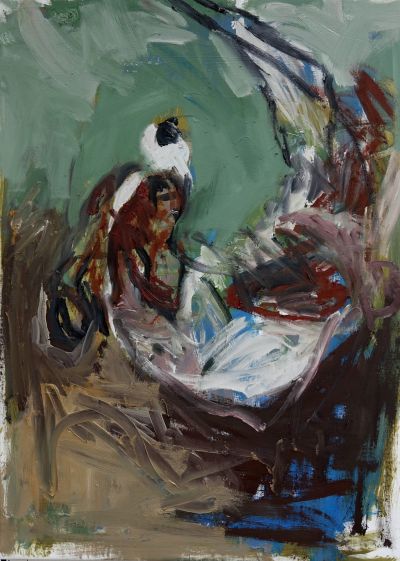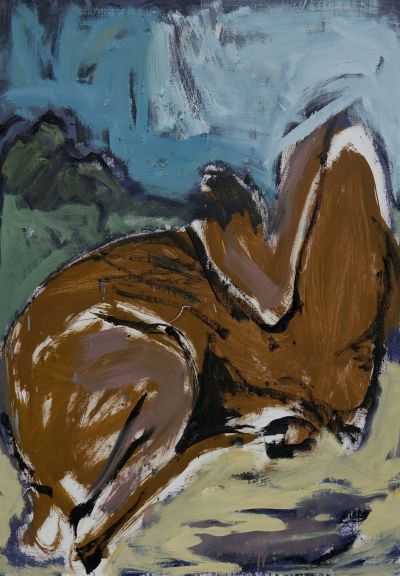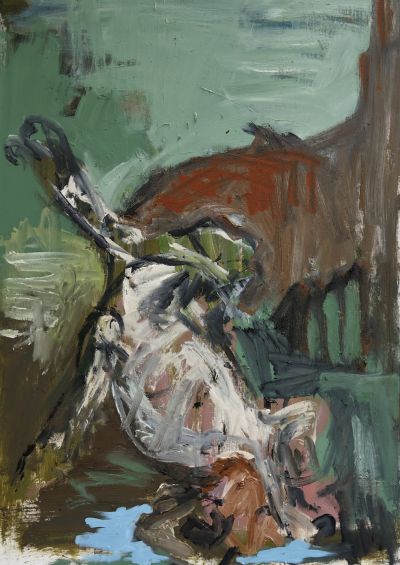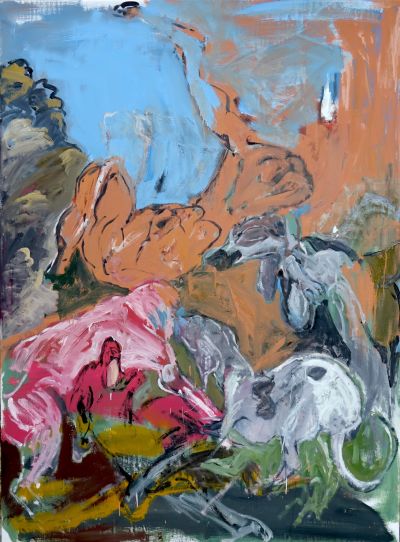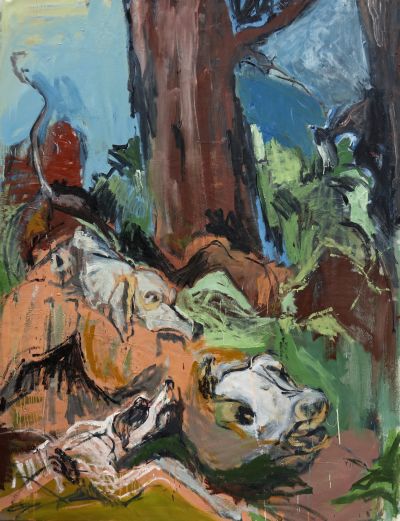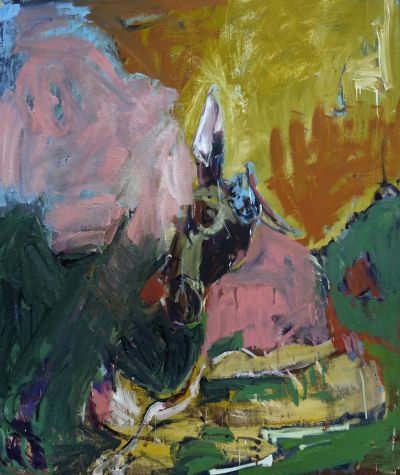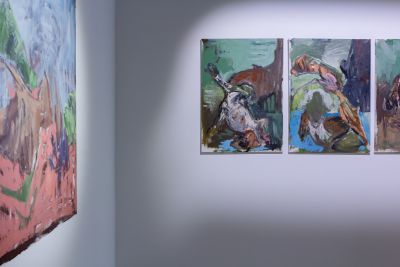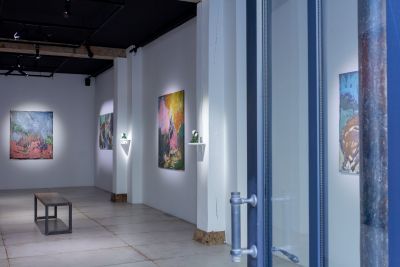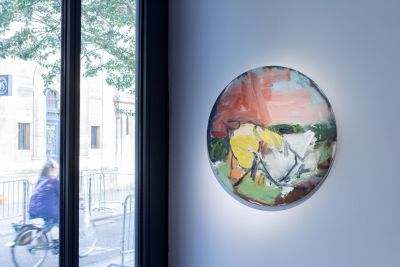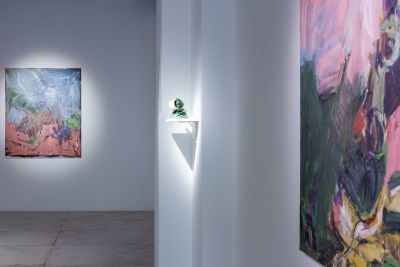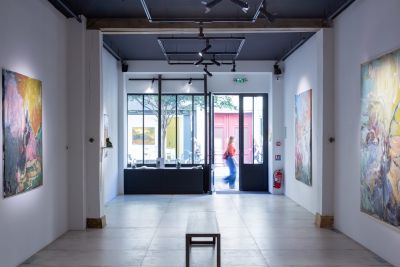Inspired by his German roots, the Black Forest of his childhood, and the Baroque painting he spent so much time studying in Madrid, Cedric Le Corf is now giving shape to a dialogue he began several years ago with the landscape genre—not as a motif, but as a space to be entered, traversed, and fully experienced. From his home in Brittany, the artist explores the porous zone between the appearance of animals and their pictorial dissolution, where representation fragments to give way to an embodied sensation. What the canvas reveals is less a figure than a moving, pulsating presence, lurking in the strata of a material where oil becomes territory and the line becomes a threshold. It is there, in this interstice between figuration and abstraction, between muted violence and sylvan gentleness, that a more immediate, almost organic perception emerges. Dogs, deer, sometimes a paw, a flank, an ear, or antlers appear on the surface of the paintings. Sometimes only a trace, an animal flash, as if torn from movement. The eye believes it recognizes an identifiable scene, almost cynegetic, but it is rather the vision of a watchman, a fragmentary, lateral perception that manifests itself and echoes the figure of the jay, that bird-watcher of the forests. Here, the gaze does not aim to capture, but rather to perceive. And to paint is to become one with the unseen.
Nothing imposes itself, everything insinuates itself. Forms intertwine, recede, and ultimately dissolve in an exercise in camouflage. Something of Matisse emerges in this way of interweaving flat areas of color, in this sensuality of color conceived as layered material. Acid greens, soft and iridescent pinks, sometimes more muted shades, coming from the shadows—the palette is marked by the cycle of the seasons: nothing asserts itself and everything blends in among the foliage, branches, and other greenery.
A mutual absorption is at work and, as if through a pronounced symbiosis, the alert animal world becomes an integral part of the forest. Sandstone sculptures extend this reflection on interconnection. While porcelain once found its place at the heart of the wood, it is now these animal fragments that are integrated into the very flesh of these sculpted landscapes. And in the depths of the forest, it is a relationship of attention that Cedric Le Corf seeks to capture. It is a way of being there, intensely, without ever interrupting the momentum of life.
- Maud de la Forterie,
journalist and art critic
